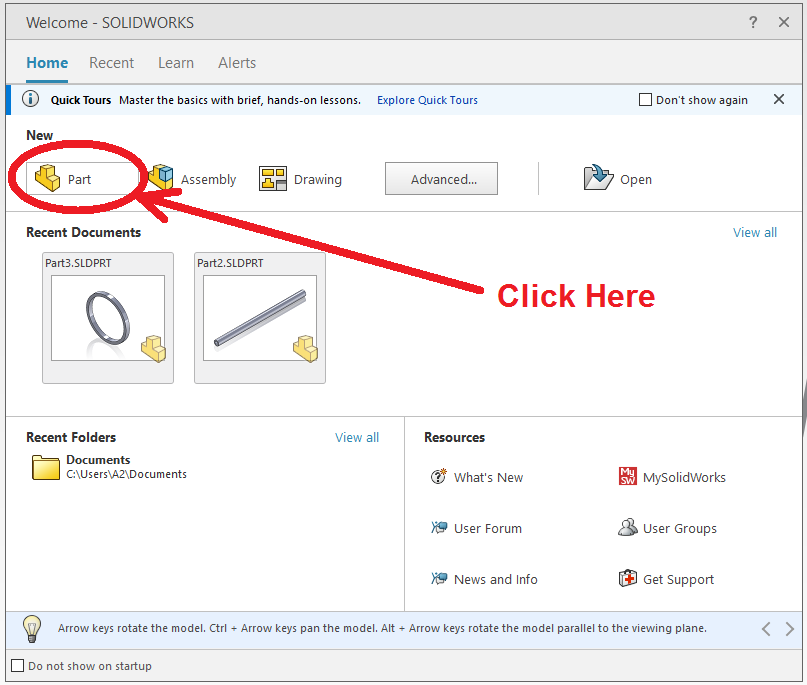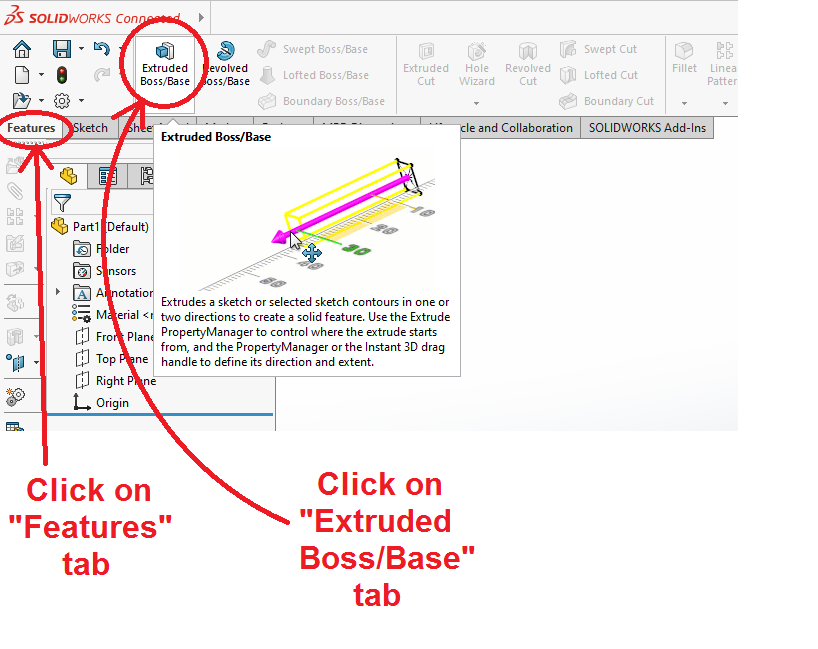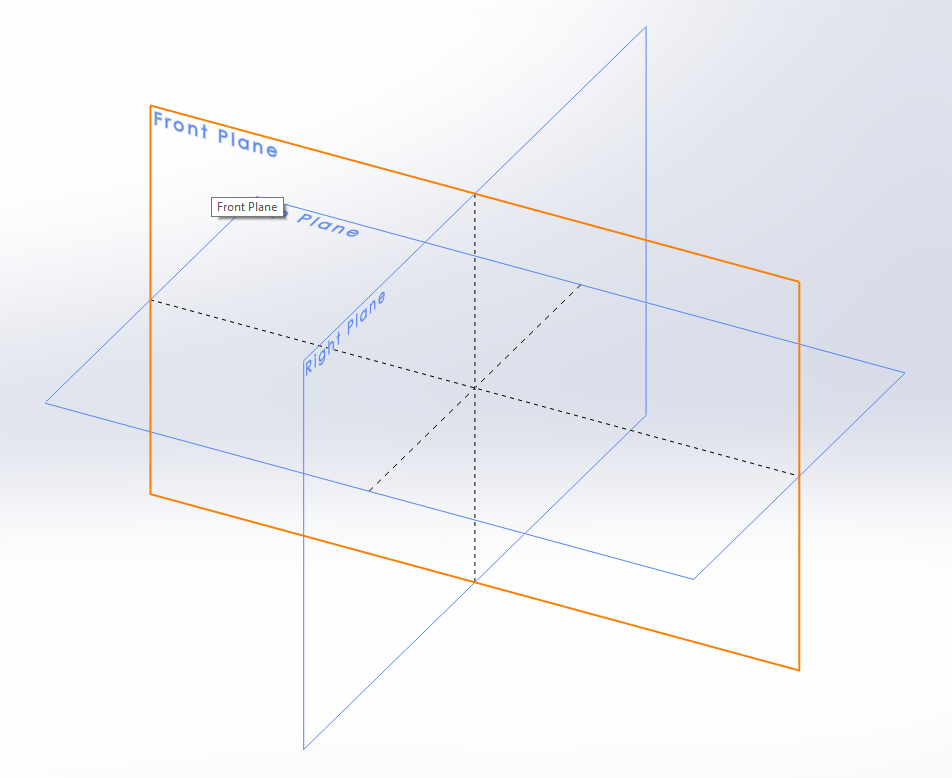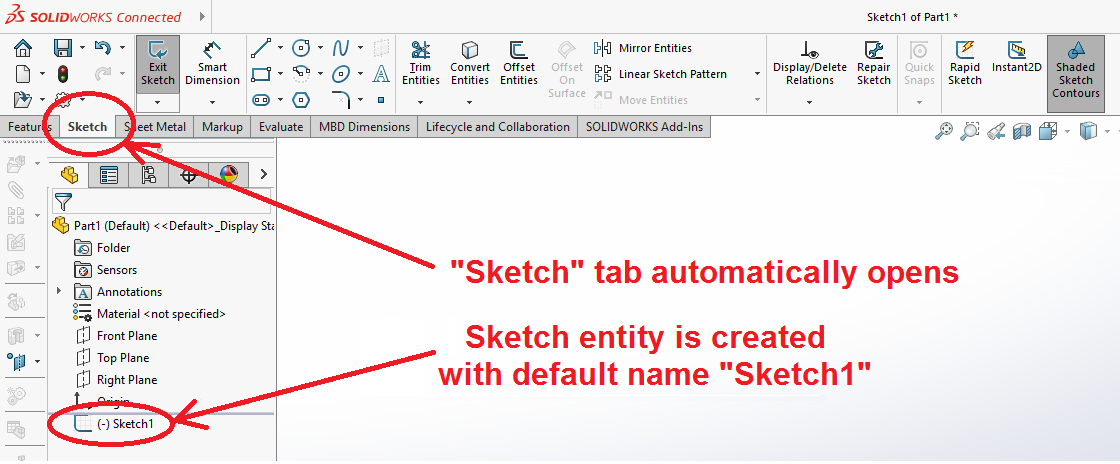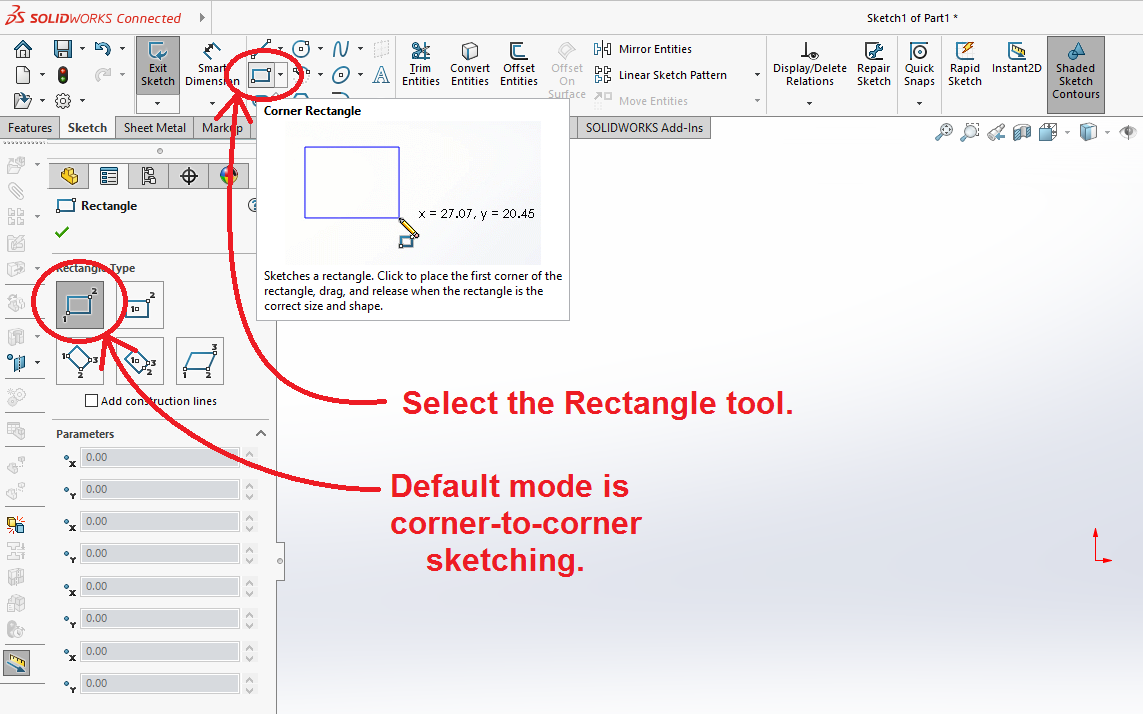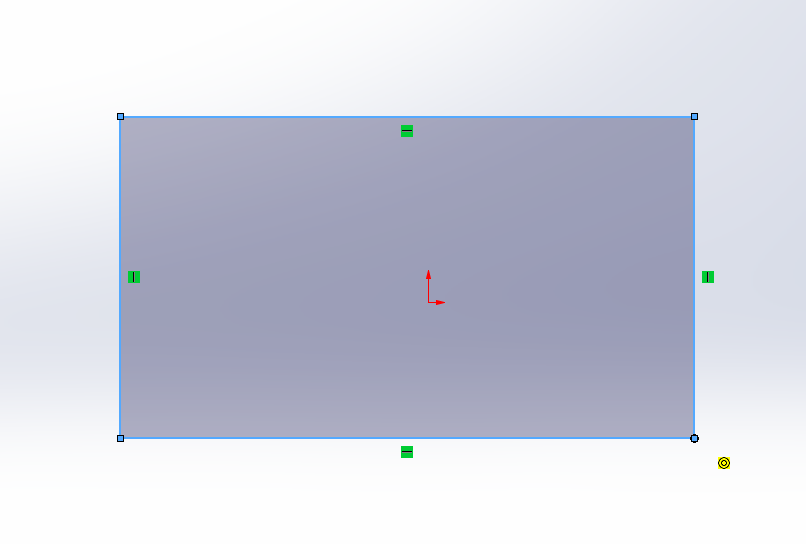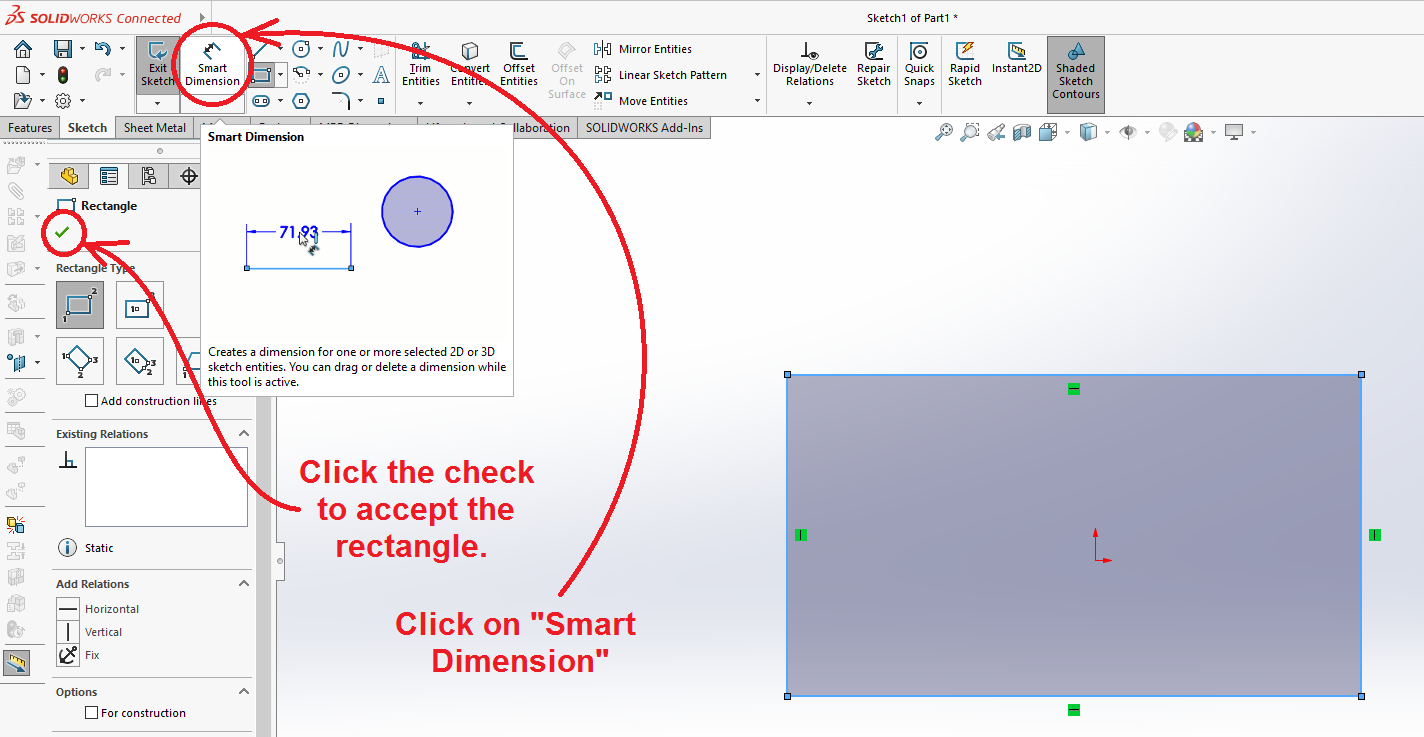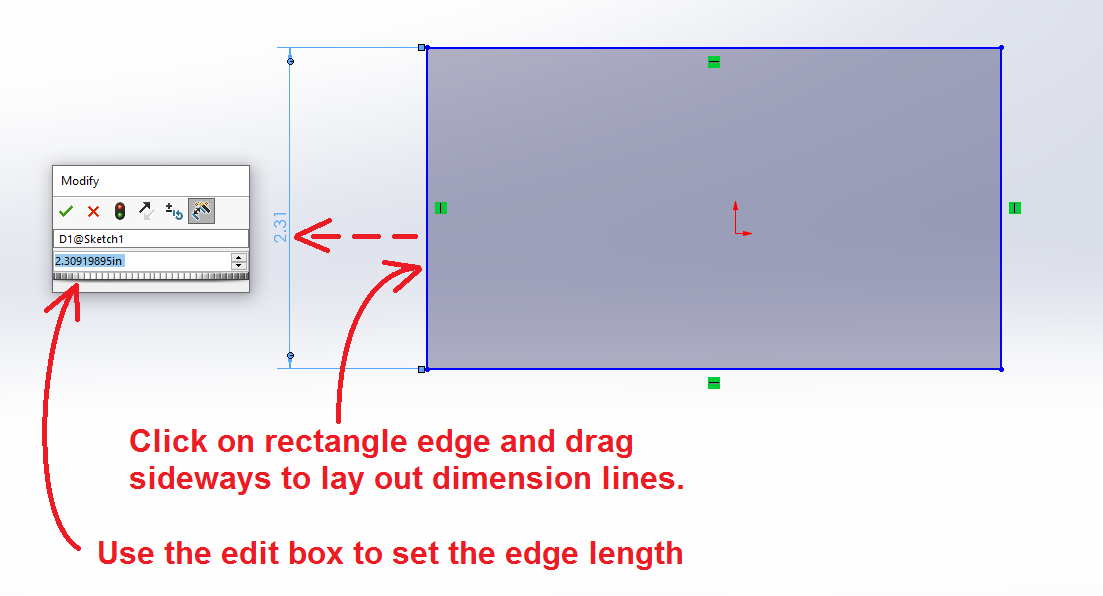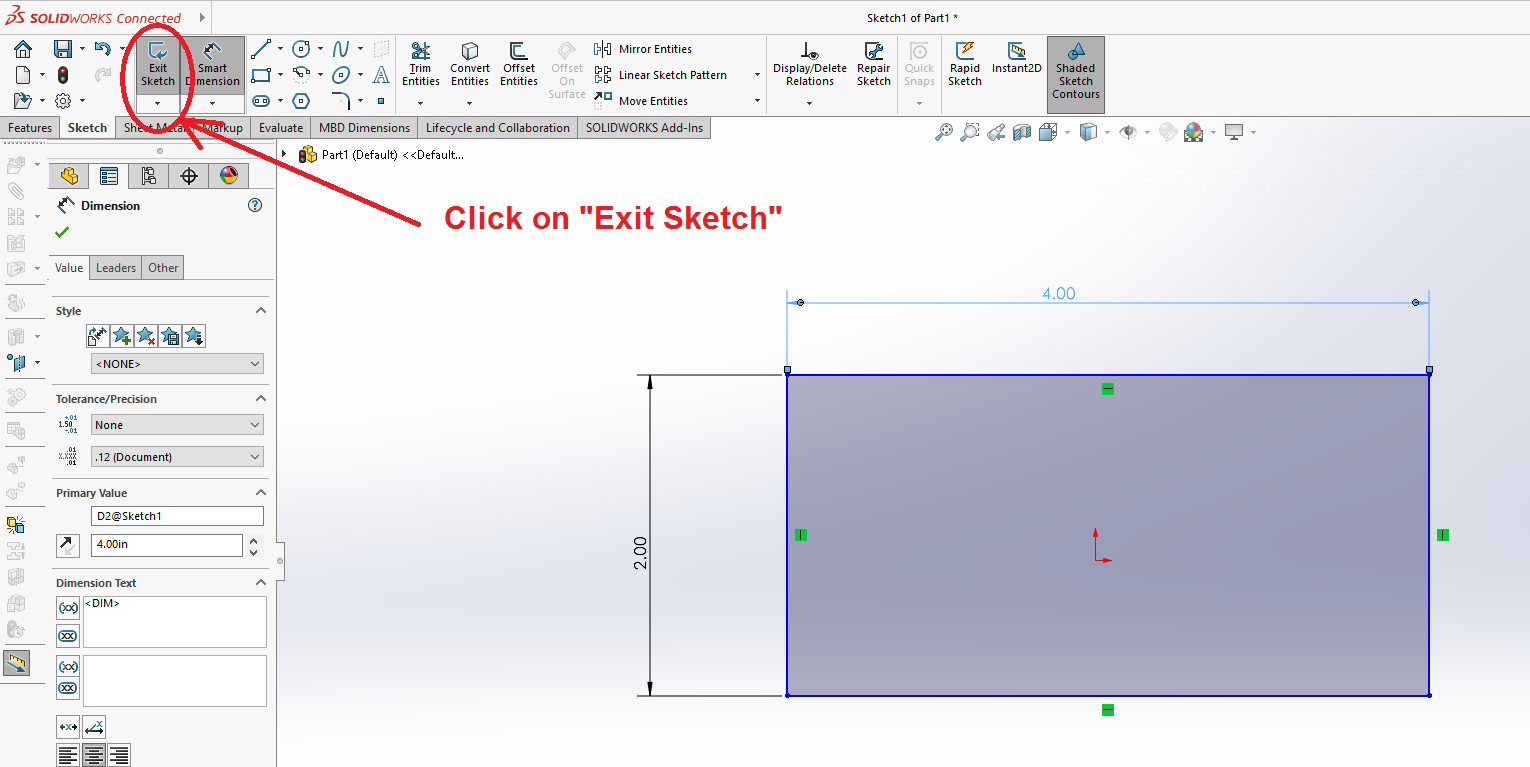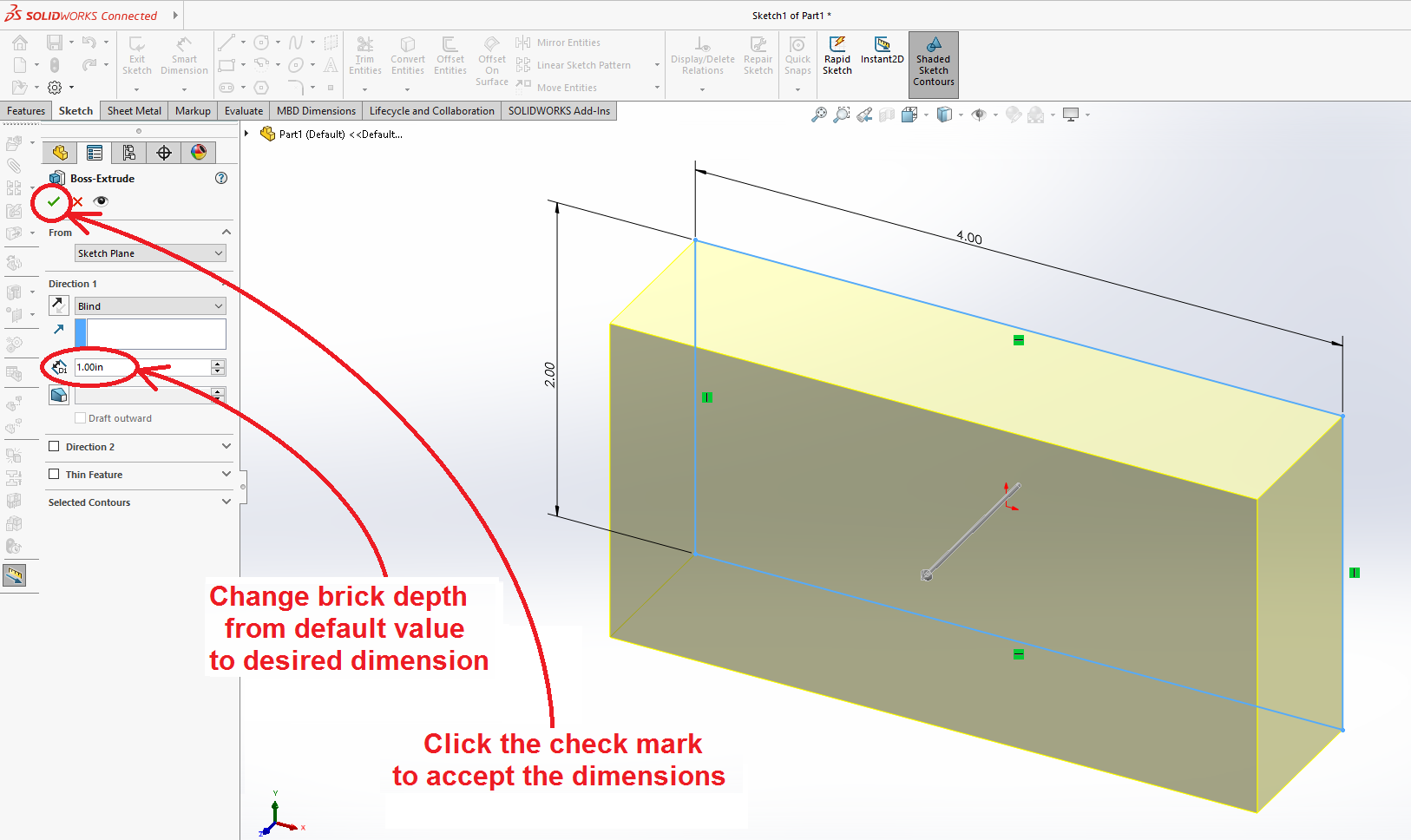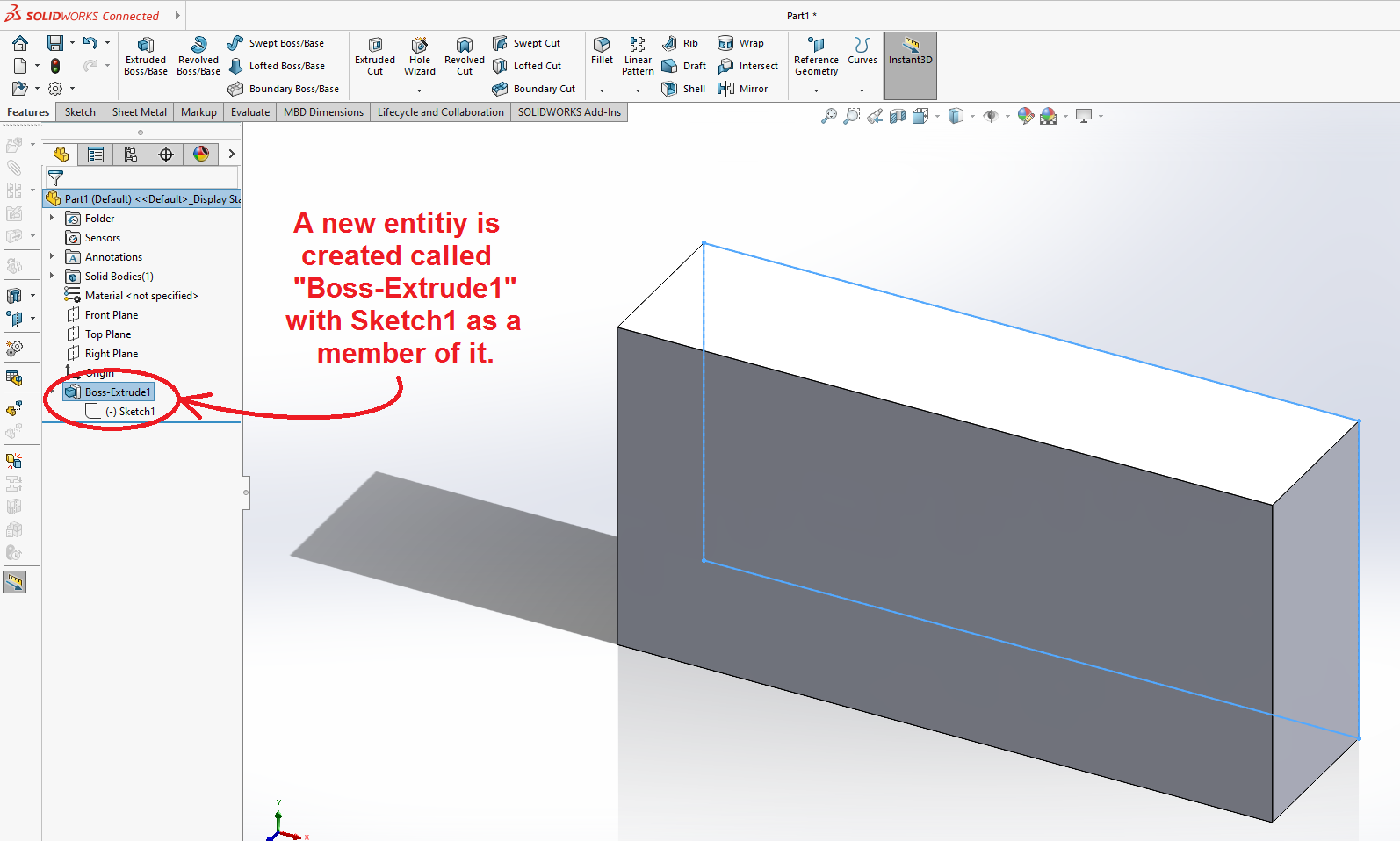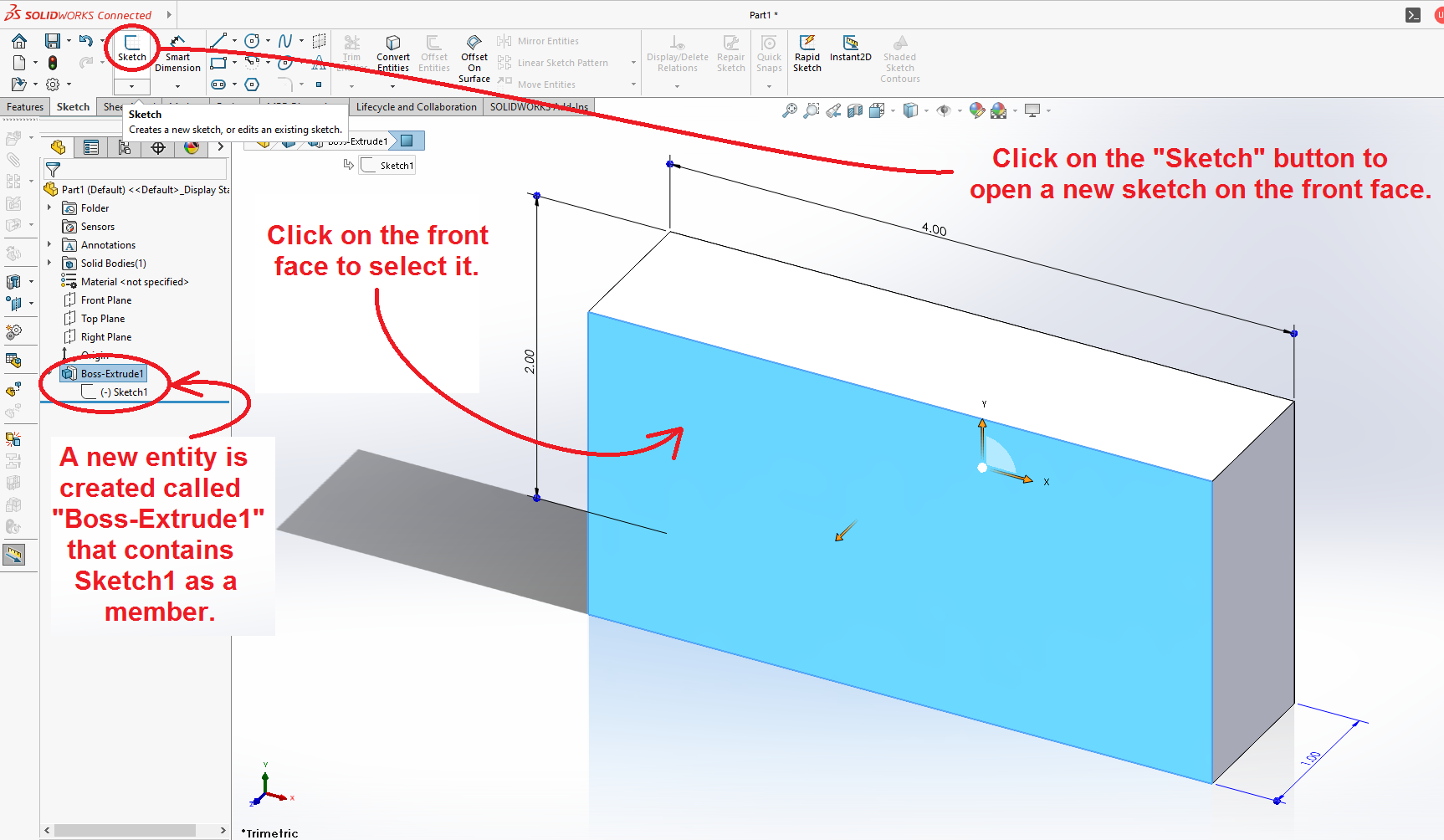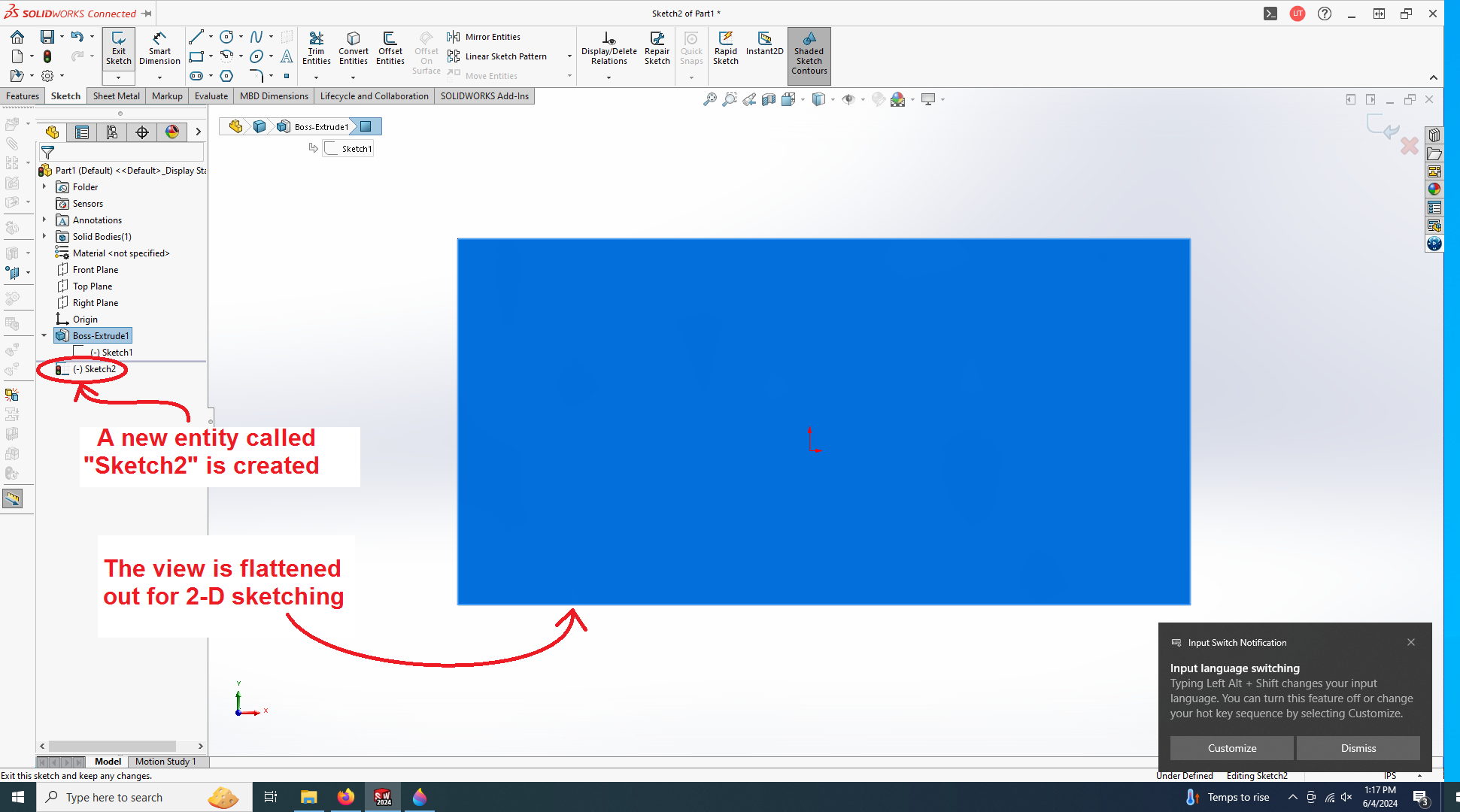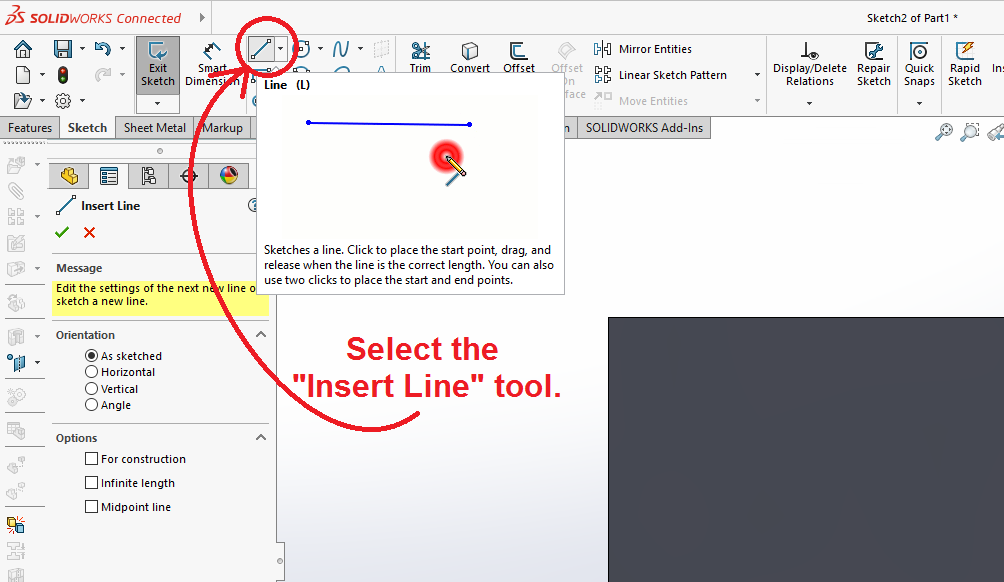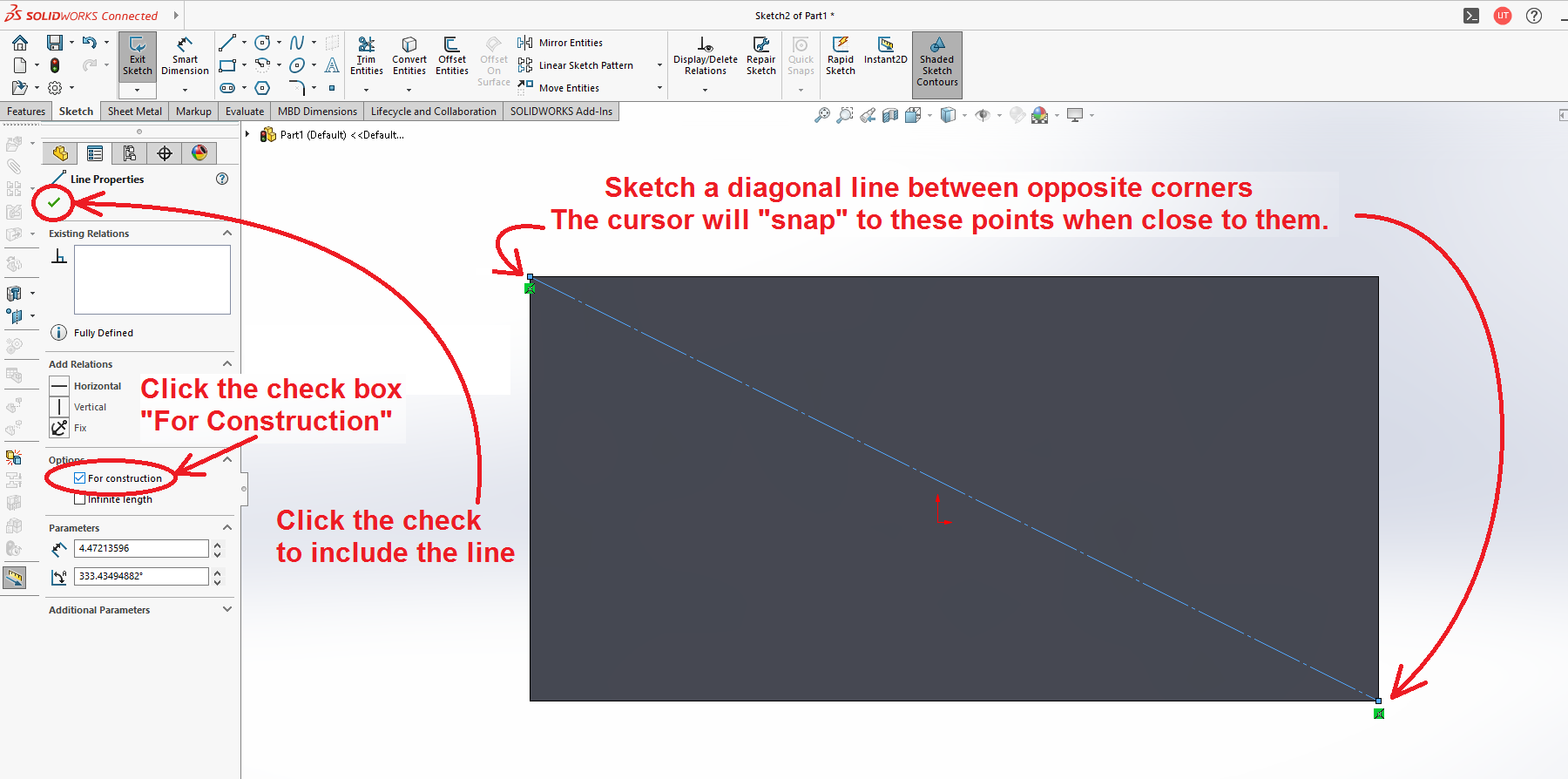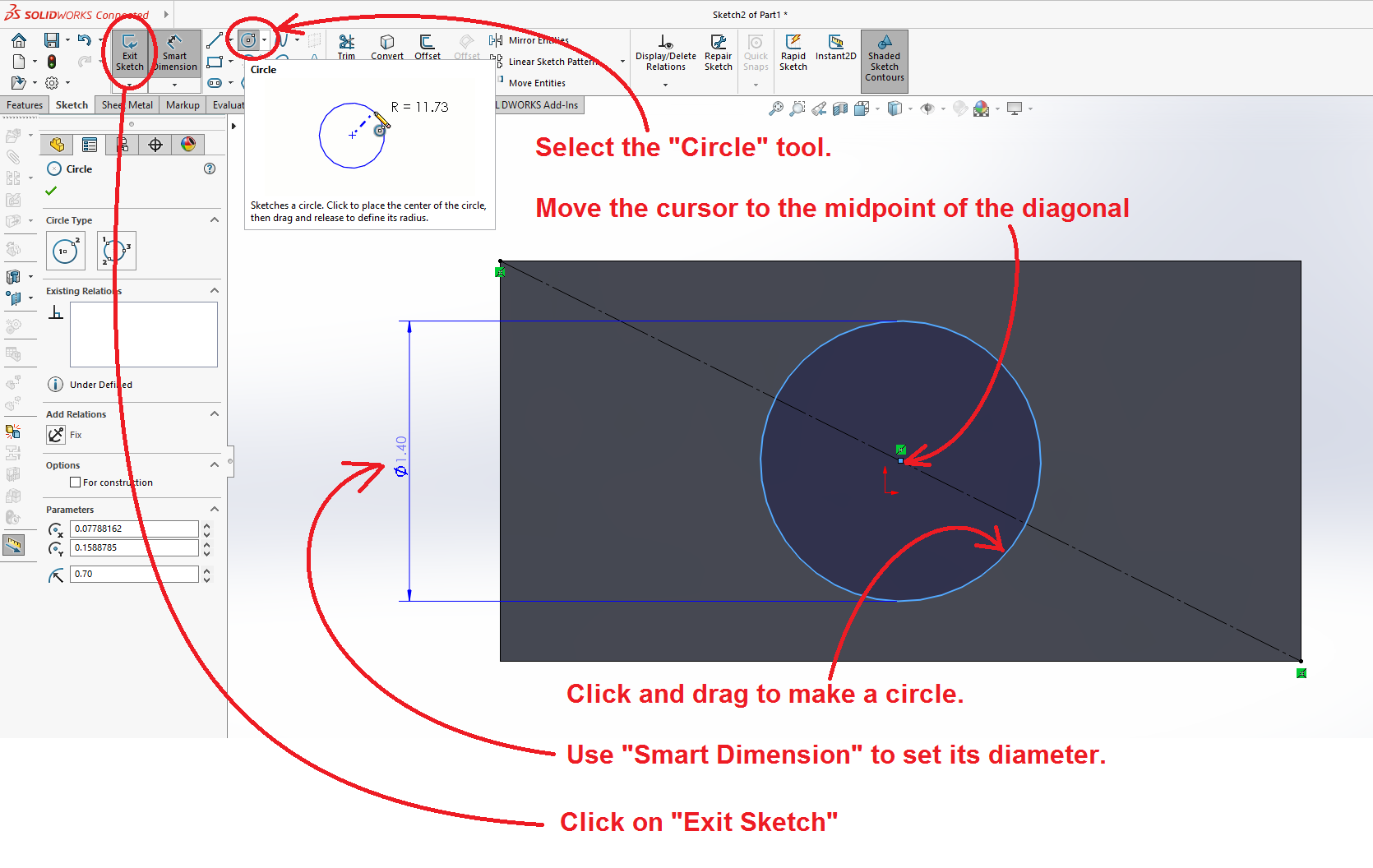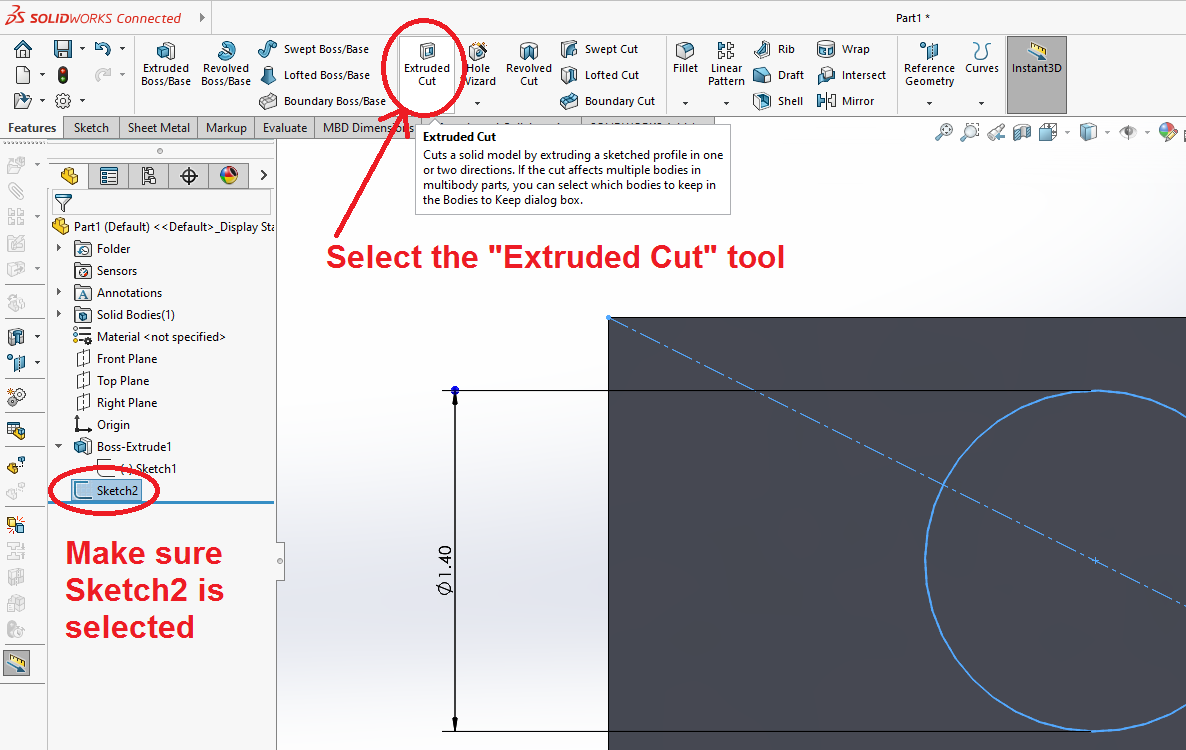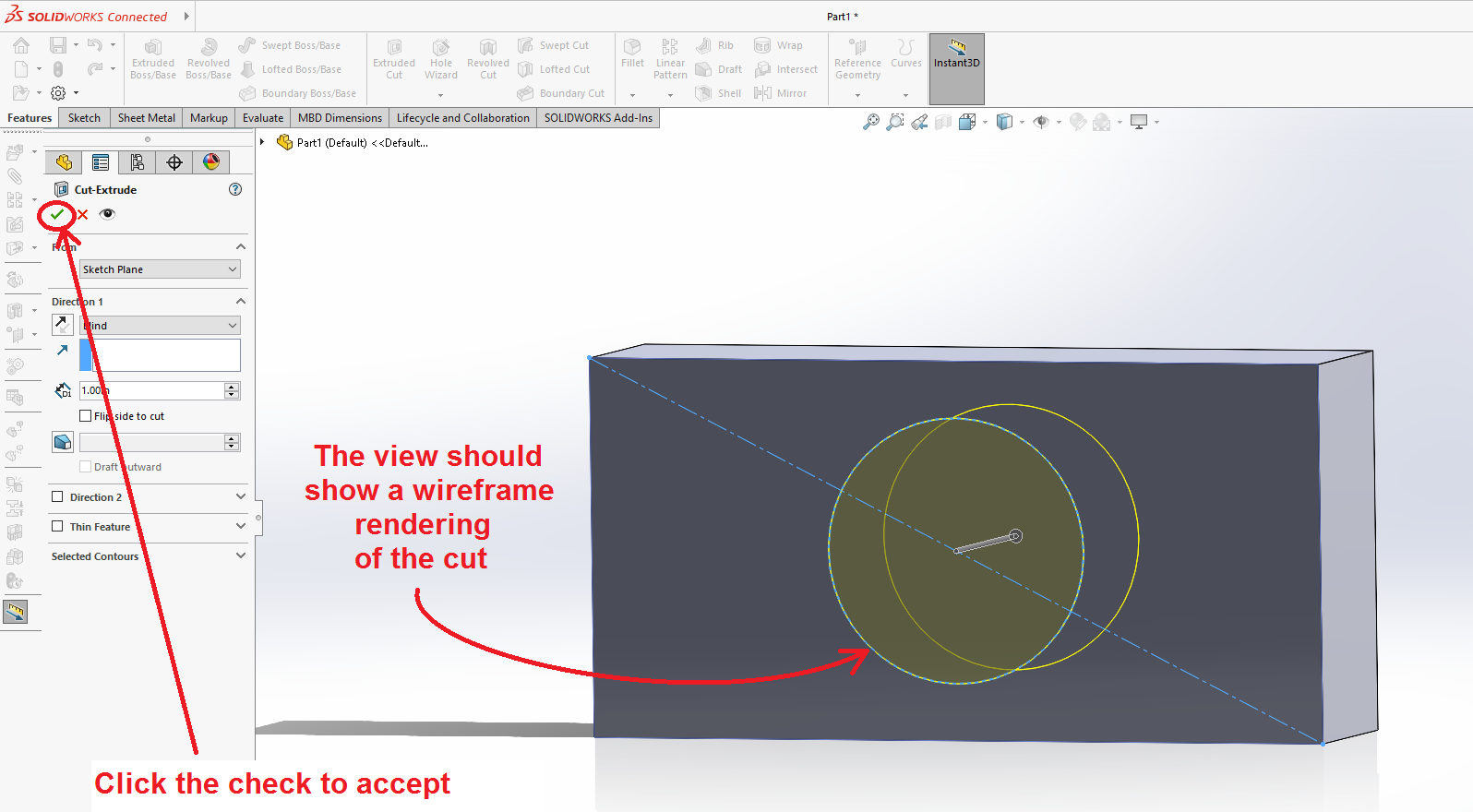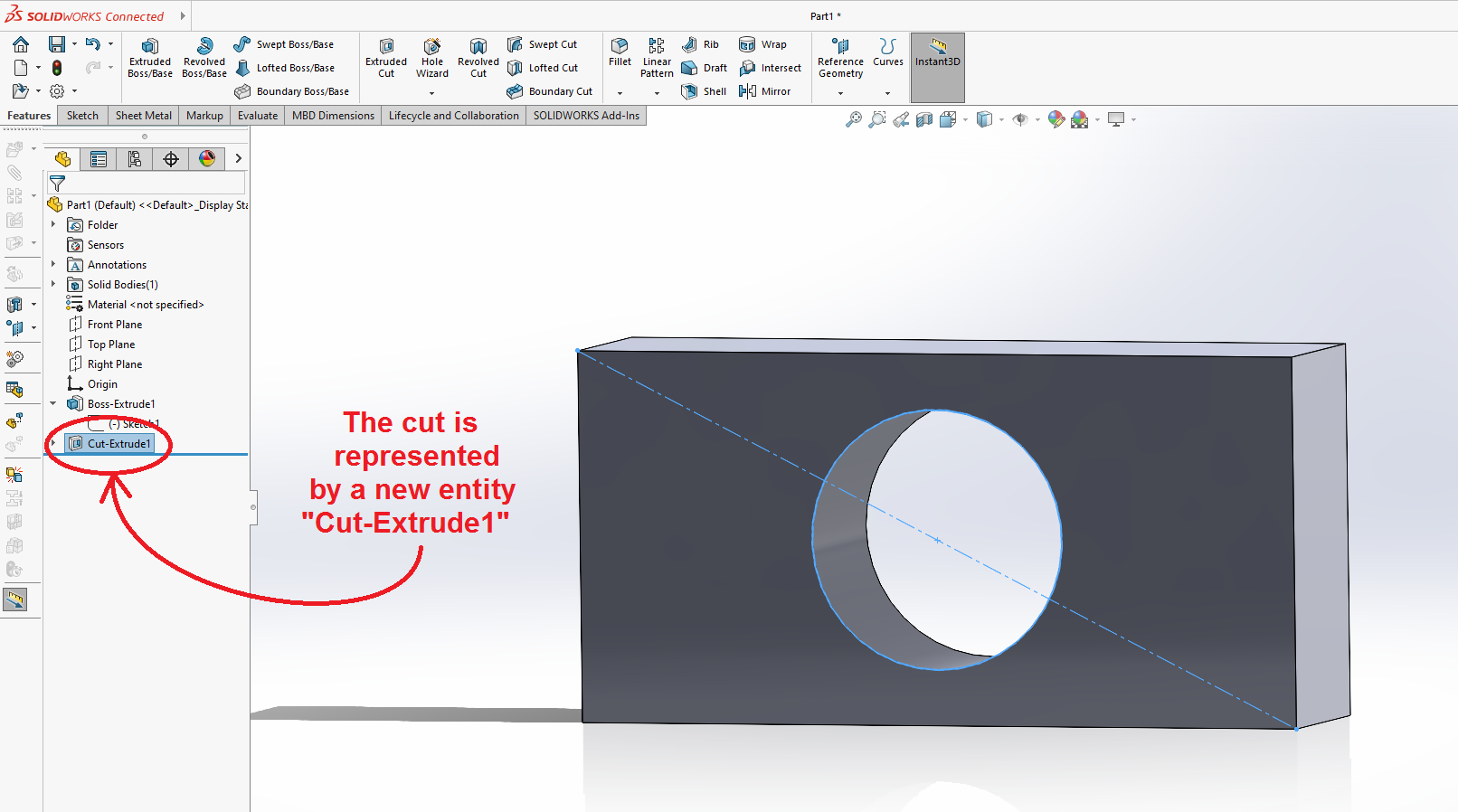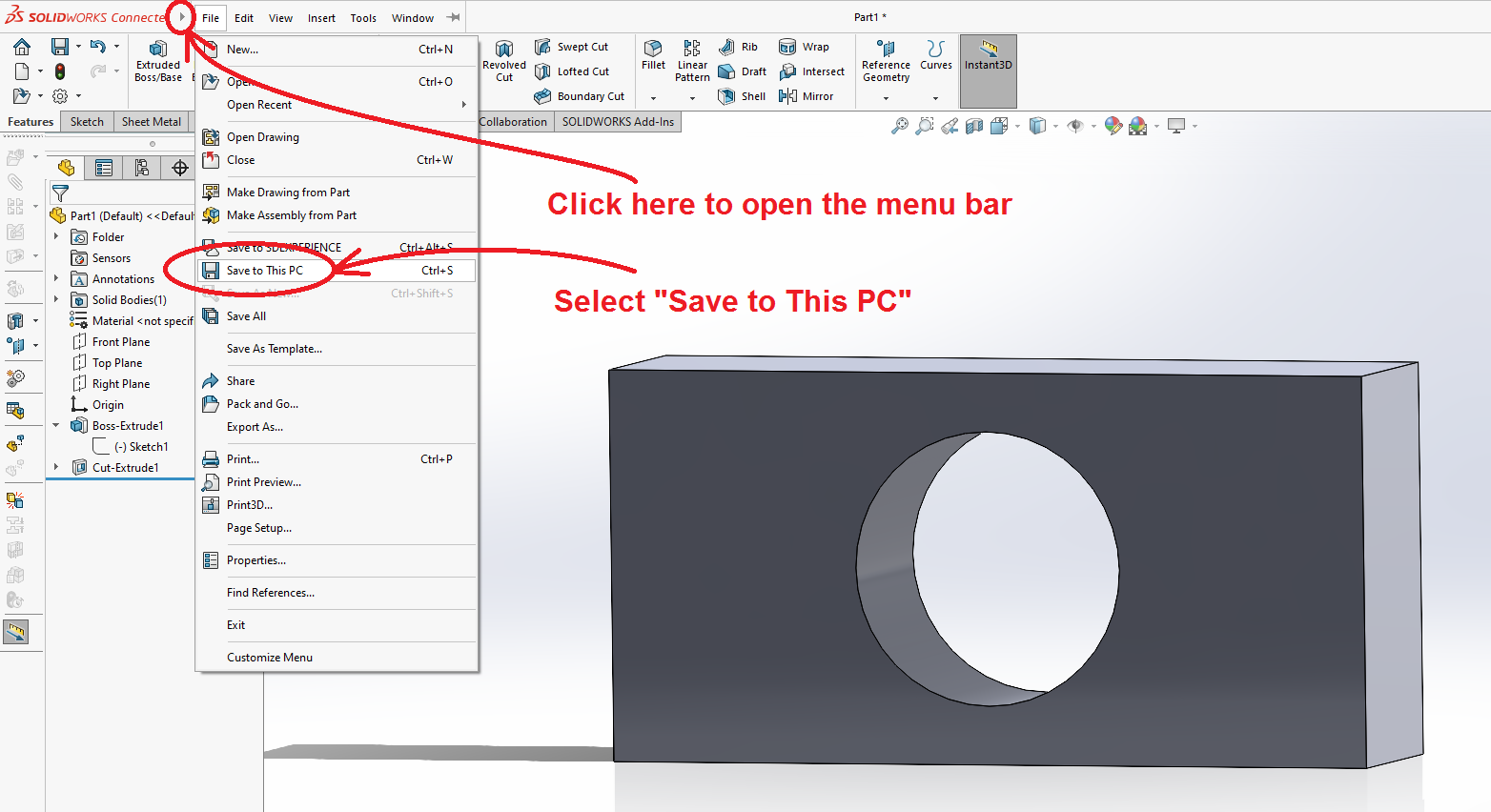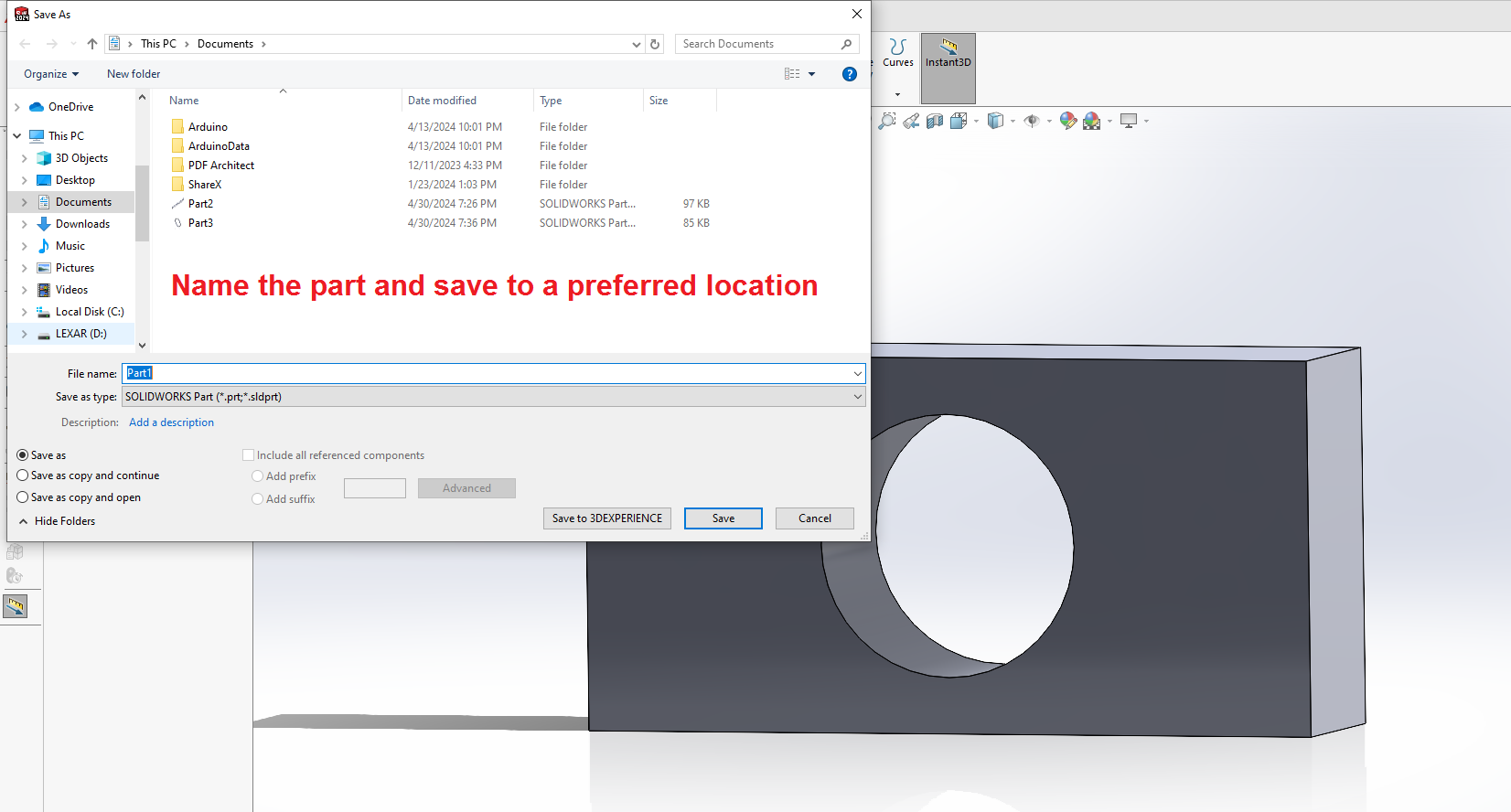Brackets Tutorial 1: Solidworks From Zero
Link to: Bracketage Main Page
This tutorial assumes no prior experience with Solidworks.
When you load Solidworks you will see a dialog box like the one below.
Select "Part" to create a new design for a part.
The first operation is to create a brick. In the "Features" tab, select "Extruded Boss/Base."
This will open a view to select a plane for making a 2-D sketch. It doesn't matter which plane you select at this point.
The "Sketch" tab will automatically open and the program will go into a 2-D viewing mode.
Various sketching tools are available. In this tutorial we will cover two of them, starting with the Rectangle tool.
Select the Rectangle Tool from the tool bar.
Click and drag the cursor diagonally to sketch a rectangle. Don't worry about how big it is. Click the check mark to accept it.
Select the "Smart Dimension" tool from the tool bar.
Click the cursor on a side of the rectangle and drag it away from the part. A set of dimensioning lines should appear, along with a dialog box with an edit window. Change the value in the edit box and click the check mark.
Add dimensions for both the length and width of the rectangle as shown below.
Click on "Exit Sketch."
The program will automatically open the "Extruded Boss/Base" feature tool. The brick thickness will have some default value. Select the edit box and change its value. Click the check mark to accept the values.
The computer should now displat a 3-D rendering of the brick. The features tree will show an entity called "Extrude1". You can select the name and change it if you like.
Next we will add a hole to the part design. Click the cursor on one face of the brick to select it. Click on the "Sketch" tool to open a new sketch.
The view will switch to a 2-D view for sketching on the selected plane.
Select the "Insert Line" tool from the tool bar.
Hover the cursor near to one of the corners of the rectangle. The system should make the cursor "snap" to the corner. Click there and release. A line will appear between the corner and the location of the cursor. Move diagonally down to the opposite corner and click. Move the cursor over and check the box labeled "For Construction." Hit the green check mark to accept.
Now select the "Circle" tool from the tool bar. Move the cursor near to the midpoint of the diagonal line. Once it is close enough, a small box should appear that represents the midpoint of the line. Click there and drag the cursor out away from the point. Click on "Smart Dimension" and then click on the circle. Drag some dimension lines out to a convenient location and set the value of the circle diameter (or radius) to a desired value. Click on the green check mark to accept. Hit "Exit Sketch."
A sketch entity with the default name "Sketch2" should appear at the bottom of the features tree on the left. Click on the name to select this feature and then select the "Features" tab and select "Extruded Cut."
The tool should be able to automatically find the right parameters to cut the hole through the brick. If you wished the hole to only go part way through the brick, you can change the depth dimension for the cut as long as it is in "Blind" cutting mode.
Click on the green check box to accept.
A new feature will appear on the "Features" tree, called "Cut-Extrude1" which represents the cut.
Next we save the file. Click on the small arrowhead next to the Solidworks logo right at the top of the window. This will open up a conventional menu bar. Select "File" and the "Save to This PC."
A conventional File::Save dialog will open. Name the part and save it to an appropriate location. It is recommended that you save it to a portable thumb drive so you can carry your work from computer to computer.
This concludes the first tutorial.
